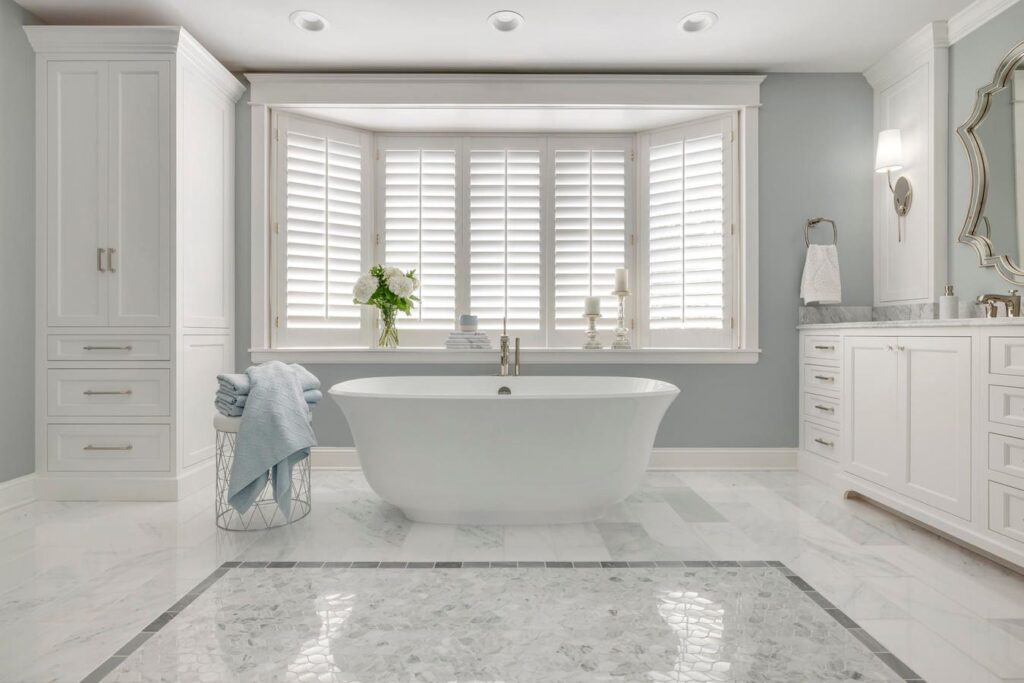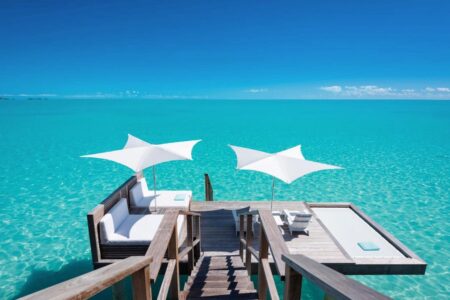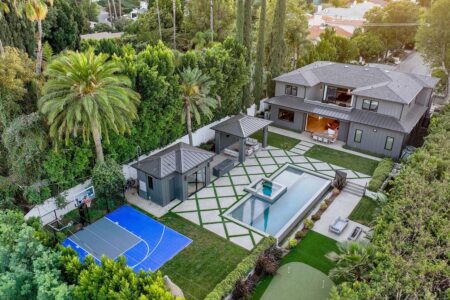A bathroom remodel – especially for a primary suite – is a major undertaking with tremendous wellness potential for its users. Done well, it can also offer strong resale potential for your property. That’s why it’s worth paying heed to what the pros say is trending. And why I always pay attention when the National Kitchen & Bath Association, a trade organization comprising 50,000 members, including designers, dealers, remodelers, installers and manufacturers, releases its annual studies. (In the interest of disclosure, I’ve been an NKBA member for close to two decades, but it’s only one of the leading associations I source for research.)
The 2024 Bathroom Trends Research Report was just released last week, and you probably won’t be surprised to learn that wellness design plays a strong role in the findings. Here are six of the wellness-related emerging trends cited in the study, with emailed insights from NKBA member designers who had a chance to review the report and expound upon the concepts described in its points. These are the four design professionals who shared how the trends NKBA tracked are showing up in their practices:
1. Personalized Features
Brunet likes to create a multi-sensory bathroom experience, she says. This includes layered lighting for sight; music for hearing; home fragrances for smell, and textured finishes for touch.
Velasco likes to create visual effects, she shares. “I usually like drama when I use wallpaper in a bathroom so I can make evident the nature of the material,” the Miami designer shares, elaborating, “therefore I go for murals, oversized patterns, and gradient colors.”
Grubb points to personalization in storage details, particularly those enhancing functionality. “Organization has grown exponentially over the years, especially comfortable storage [features] like slide outs under sinks, beauty storage slide outs to hold a blow dryer, hampers built into the vanity, and of course dividers in drawers.” These personalize a bathroom in ways that make a client’s morning and nighttime routines more convenient, saving the user time and stress.
Ireland’s clients want the “holistic experience” of a spa, she says, and she delivers that in various ways. “Among the features I’ve integrated into my clients’ bathrooms are built-in lockers, benches, saunas, and aromatherapy incorporated into both the shower and the tub. Scent, known for its powerful ability to evoke memories, can transport us back to our most indulgent spa experiences,” she notes. Multiple water features, including additional shower heads on slide bars, are included to cater to individual preferences, she adds.
2. Health Focus
Ireland emphasizes stress reduction in her health and wellness focus, she reports. “Today, we understand more than ever that stress is the leading cause of illness so I strive to really listen to my clients’ needs, desires, and to understand their lifestyle.” She then approaches design with the goal of counteracting stressors. “It’s important that I understand what will help to simplify and make their lives easier to navigate in their newly imagined spaces.”
“Natural light contributes to wellness so it’s nice to have oversized windows to let in an abundance of light, air, and triple glazed windows will work for this in most climates,” Grubb observes. “Operable windows allow fresh air; for privacy needs there can be motorized exterior or interior roll down shades or smart glass. I think ‘openness’ and size contributes to wellness,” the Southern California designer suggests.
3. Accessibility
“Approximately 90% of my clients consider accessibility features, a trend likely influenced by the significant aging population in the US,” declares Ireland. “My clients are building or remodeling their homes with aging parents in mind. I’ve also encountered cases where family members have health issues or disabilities,” she adds. The accessibility features she’s incorporating include curbless showers, extra-wide entrances, and open-concept baths with wheelchair-friendly space. “My designs often incorporate grab bars, bench seats in showers, and easily accessible shower trim at lower heights. What’s most important is to foster independence, enabling our loved ones to shower with ease.”
Blocking for grab bars is required in her area, Brunet says, but she also specifies other accessibility features, including zero entry showers when possible. “We have noticed an increase in interest and requests for these in the past three years, even for secondary bathrooms. This ties in well with creating accessibility throughout a home.”
Grubb points to wall-mount vanities that can be lowered if needed later, plus integrated towel/grab bars, handheld showerheads and benches, plus zero threshold showers with wider doors. These also add to the project’s “contemporary and cool” factors. “We never mention a client is getting older! Sometimes it’s unspoken and we’ll include accessibility features in most projects calling them ‘stylish’ or adding comfort,” he confides.
4. Larger Showers Instead of Tubs
Brunet observes, “I would say that 85% of remodeling projects are looking to remove a tub to accommodate a larger shower space.” She attributes this to time constraints, water conservation and reduced maintenance. “I have seen a slight increase in interest and installation of steam showers, mostly for health reasons; arthritis, aching muscles, respiratory issues,” she adds, commenting, “Shower spaces have become a destination and experiential space in higher-end projects; clients are looking for a showering experience to relax, uplift, and rejuvenate their bodies and souls.”
“Our clients have always requested large showers that are spacious and comfortably hold two people,” Grubb observes, qualifying, “However, not too oversized to overpower the room and feel it’s taking over (and they can reduce the efficiency of a steam shower).”
“I’ve noticed a growing trend where many clients opt not to include a tub in their primary bath,” Ireland says. “Instead, they desire larger showers that I am incorporating with three zones—one for each person sharing the space and a shared zone.” She also sees these enhanced showers offering spa features like steam, body sprays, or multiple additional water features such as rain and handheld showerheads.
All three designers point out that they still have clients who want tubs as well as performance showers. Some choose them for the visual factor, others for the relaxation of a long soak.
5. Wet Rooms
“I believe the wet room is still going to be a strong trend in 2024,” Ireland predicts. ”My clients still desire a spacious, spa-like, open feel for their baths, and wet rooms offer all that and more.” She seems them offering several benefits, including eliminating concerns about water intrusion in unwanted areas. “Their overall design is simplistic and devoid of disjointed elements, making movement easier and allowing for optimal use of available space.”
“In the case of the bath wet areas, there is desire for more space, natural light, and enjoyment of the senses. This includes both the shower and tub area,” observes Velasco, adding, “With more time to spend at home, families find it’s necessary to be comfortable in every area of their home.”
6. Large Format Tile
“Approximately 60% of my clients choose large-format tiles for primary baths,” Ireland reports. “The technology behind large-format tiles has come a long way, which is why it has become so popular.” There are highly realistic stone looks for less cost and maintenance, plus new shapes and dimensionality to customize a design, she adds.
Brunet says she’s been specifying these almost exclusively, preferring their uncluttered visual with minimal grout lines and their low maintenance, choosing “Large format slabs in showers and tub surrounds for ease of cleaning and a luxury look.”
Grubb says he specifies large format tiles for clients with modern leanings. ”We have often used oversized porcelain tile on the floor, or at a minimum, large tiles to mitigate grout lines.”
Read the full article here









